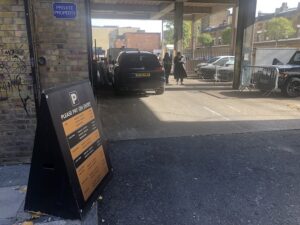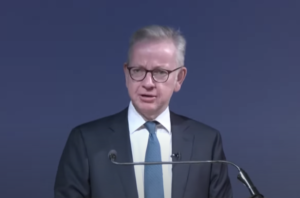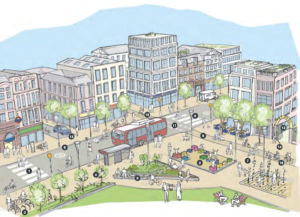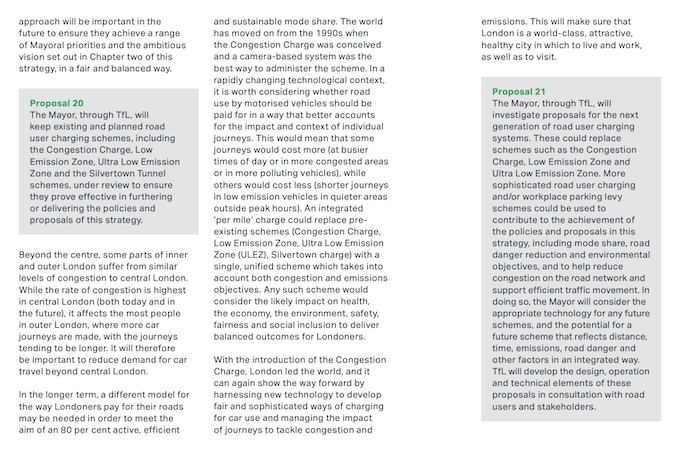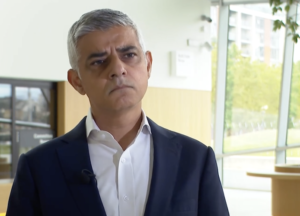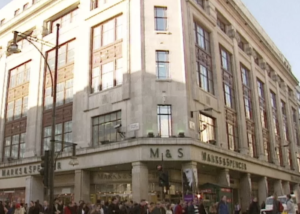It’s all happening in Oxford Street, with a new pedestrian-friendly facelift plan out to consultation, and a subsidised “pop-up” shop scheme just launched aimed at stemming the tide of US-style candy stores by attracting “innovative, cutting-edge and up-and-coming brands” to empty units.
But perhaps not happening better describes the situation with Marks & Spencer’s flagship site at the Marble Arch end of what was once dubbed the nation’s high street, where demolish and rebuild plans have just been controversially thrown out by levelling up secretary Michael Gove.
The minister blocked the planned 10-storey retail and office development following a public inquiry billed as the first major test of the ‘retrofit versus redevelopment’ arguments around embodied carbon costs and longer-term energy efficiency, rejecting his own planning inspector’s findings to determine that the scheme would “fail to support the transition to a low carbon future, and…overall fail to encourage the reuse of existing resources, including the conversion of existing buildings”.
Cheered by campaigners as a landmark challenge to our “laissez faire attitude to demolition and loss”, the decision has not landed well with others – not least M&S chief Stuart Machin. In an unusually strongly-worded statement he said the secretary of state was more interested in “cheap shot” headlines than facts: “If it weren’t so serious it would be laughable.”
For Machin, the rejected scheme is about replacing a building not capable of being viably “retrofitted” with a new flagship complex that would not only be in the “top one per cent” of the city’s most sustainable buildings, but also lead the revival of a street where 42 of 269 shops are currently empty – a vacancy rate 13 per cent higher than in the average UK high street.
M&S architect Fred Pilbrow, no enemy of refurbishment – a recent building of his won the British Council of Offices’ 2023 “retrofit of the year” award- also weighed in, accusing Gove of wanting to retain every building, whatever its merit.
That approach “freezes the city and robs it of vital potential for adaptation and growth,” Pilbrow said. “It seems no more than common sense to acknowledge that the quality of existing buildings must inform their potential for refurbishment.” His scheme, he’d said previously, was “akin to trading in a gas guzzler for a Tesla”, coming out ahead on carbon over time because of its greater efficiency.
There was no welcome either from the New West End Company, representing city centre retailers. Chief executive Dee Corsi described the decision as a “missed opportunity” to accelerate the growth of the West End. The London Property Alliance, representing owners and developers, was similarly unimpressed. Its chief executive, Charles Begley, said the decision “sent a political message” but failed to provide substantive policy guidance on sustainability.
Has Gove overreached? The scheme’s proponents’ views certainly mesh with some of the findings of inspector David Nicholson. He’s no stranger to the carbon costs arguments, having previously rejected the contentious Tulip plan for a 305-metre viewing platform in the Square Mile on the grounds that its use of “vast quantities of reinforced concrete” would be “highly unsustainable” – the first formal citing of embodied carbon as a reason to refuse planning permission.
In the M&S case, Nicholson took a similar approach, again looking to weigh and compare the elements of the competing arguments. He sought to balance the harm caused by what he called “substantial quantities of embodied energy” in demolition and new construction – judging these “much greater” than if the existing building was refurbished – against the economic benefits of redevelopment.
Crucially, he found that refurbishment of the site would be “so deeply problematic…that no-one would be likely to pursue it or fund it”. He said that although there should generally be a strong presumption in favour of reusing buildings, “much must depend on the circumstances of how important it is that the use of the site should be optimised, and what alternatives are realistically available”. Retrofit first, but not retrofit only, perhaps.
In the absence of that realistic alternative, Nicholson concluded that refusing the scheme would, on the basis of the evidence, lead to the “closure of the store, the loss of M&S from the Marble Arch end of Oxford Street and substantial harm to the vitality and viability of the area”. He decided that the benefits of the new scheme would therefore outweigh its harm both to heritage and to the UK’s transition to a zero-carbon economy.
Gove took a different view, deciding that any harm to Oxford Street arising from a refusal of permission would be limited, and professing himself unpersuaded that refurbishment would not be viable. In a key finding, given that planning policy imperative to consider whether alternatives to a plan on the table are realistic, he decided that the option of keeping the building had not been fully explored.
While that view itself might be open to challenge, the minister’s approach to the carbon question as a whole is highlighted in a typically incisive analysis of the decision by planning lawyer Simon Ricketts.
Faced with conflicting claims, Gove actually reaches “no concluded view on whether the redevelopment would, over the life of the building, use less carbon than any replacement,” Ricketts notes, adding, perhaps in understated fashion: “That might be seen as surprising given that surely it is the core issue.”
At one level, this is because our understanding of “whole life” carbon assessment is still developing – a point on which Gove and the inspector agreed. It’s not yet straightforward, as Ricketts has written elsewhere, to “weigh longer-term operational carbon savings against the one-off carbon costs associated with demolition and rebuild”, or to weigh carbon saving against other material considerations.
And that, Ricketts says, leaves Gove’s M&S decision short of a definitive finding that “demolition and rebuild will lead to greater release of carbon over the lifetime of the building than a hypothetical refurbishment of the existing building”.
National planning policy doesn’t help much yet either, offering no clear guidance, while the M&S plan was deemed by City Hall, after two separate considerations, to have met Sadiq Khan’s more up to date and stringent requirements on “whole life” carbon and refurbishment versus new build.
Factors like these may yet see the minister’s decision heading for the High Court, but it is already sending shockwaves through the planning and development community. Concerns were raised for example last week when the City Corporation planning committee approved a 63-storey office tower in Bishopsgate replacing an eight-storey block just 30 years old. Could Gove be pondering another intervention?
The detail of the ruling may prove less important than its wider impact. It is already changing the “mood music” and nudging architects, developers and their investors increasingly towards refurb rather than demolition. Net zero expert Simon Sturgis, who spoke against the M&S plan at the inquiry, made this point to Building Design magazine, forecasting that tougher regulations would be on the way shortly as well.
So what now for Oxford Street, which M&S barrister Russell Harris KC told the inquiry now has a bad smell: “The reek of failure, of second or third best.” Major stores including Topshop and House of Fraser have gone – now possibly M&S too – and while IKEA and HMV are coming, the street still needs to “innovate and ensure we can offer a top-class experience”, according to Westminster council’s cabinet member for planning and economic development Geoff Barraclough.
The council’s upgrade plans, albeit falling short of the mayoral pedestrianisation scheme killed off by one of the Labour administration’s Conservative predecessor in 2018, are a step on that road, described by Corsi as “necessary commitment to ensuring a long-term and sustainable future for the district.”
Necessary but perhaps not sufficient, according to some. They did not go far enough, because there were no pedestrian-only spaces, Richard Scott from retail property specialists Nash Bond, told Drapers Magazine last week, with consultant Jonathan De Mello adding that the measures would not “fully address the issues of congestion, pollution and the plethora of candy shops that still continue to trade.”
Ricketts’s conclusion is bleak: “An important part of Oxford Street may well indeed become vacant or subjected to uses which will do nothing for this vulnerable commercial area.” Sturgis says he knows of at least two developers who’d “jump at the chance” to refurbish the Marble Arch store. Time will tell, but how much time does Oxford Street have?
Twitter: Charles Wright and On London. Photograph: BBC News. If you value On London, become a supporter or a paid subscriber to publisher and editor Dave Hill’s Substack. Thanks.

